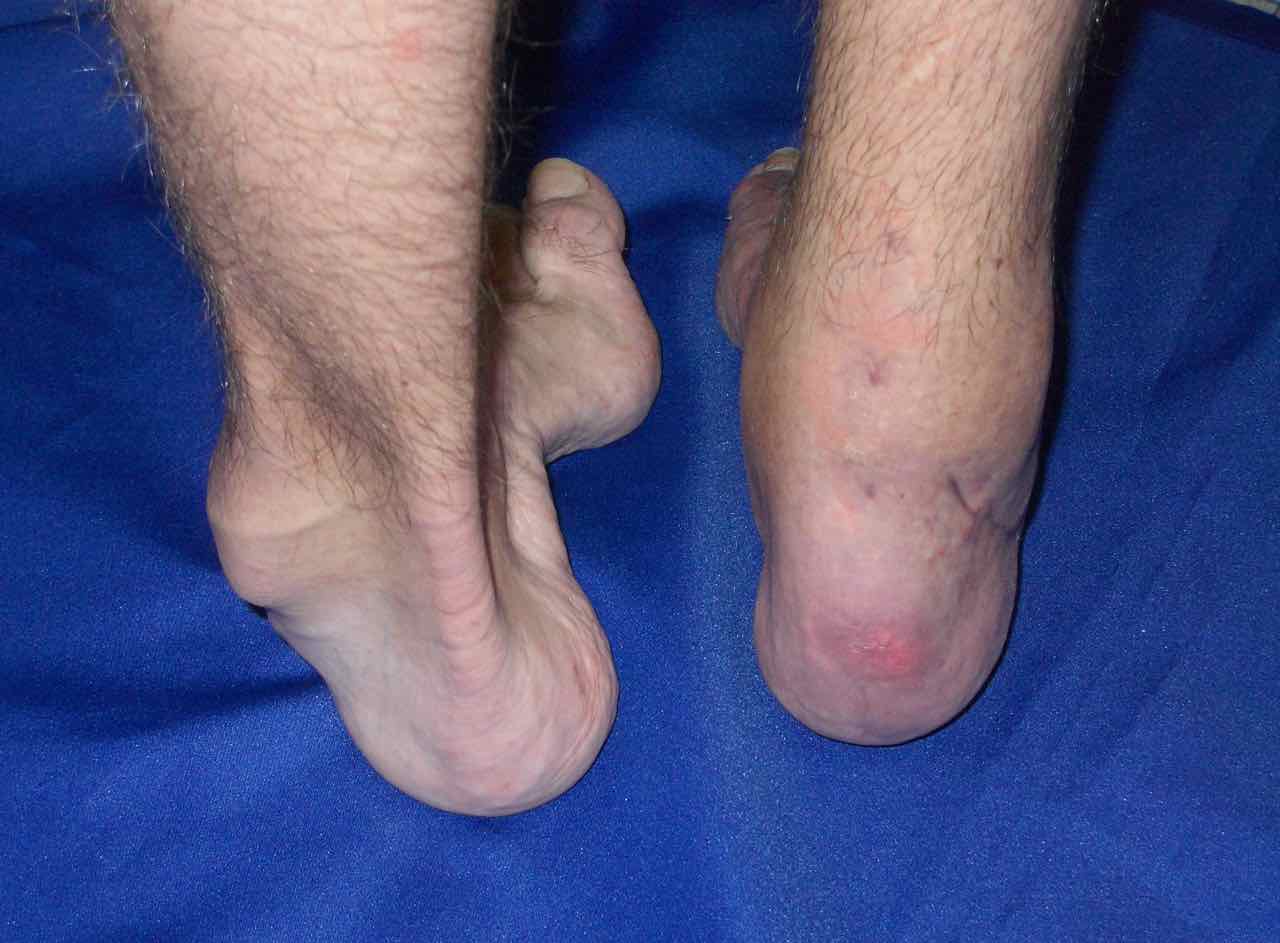

Charcot-Marie-Tooth disease (CMT) is the most common congenital neuropathy, affecting nearly 3 million people worldwide. Yet, most physicians have never seen a patient with CMT, and those who have may not realize that surgically flattening the crooked CMT foot is often one of the most effective remedies for the debilitating deformity caused by the disease.
“Around 75% of CMT patients have high-arched feet that are more prone to stress fractures, ankle sprains, arthritis and pain with walking,” said Glenn Pfeffer, MD, director of the Foot and Ankle Program at Cedars-Sinai and co-director of the CMT multidisciplinary clinic, one of only a handful of nationally recognized CMT programs in the country.
“The goal of surgery is to take the crooked, unbalanced foot and create one that is flat on the ground (plantigrade) when walking, with a stable ankle and adequate motion,” he explained.
Physicians haven’t been able to offer CMT patients much by way of treatment, in part because CMT isn’t just one disease. To date, scientists have discovered more than 120 genetic mutations linked to CMT. The symptoms patients present with depend largely on which genetic mutation they have. But in the majority of cases, problems arise first in the feet.


Carving Out a Specialty
In 1989, when Pfeffer saw his first patient with CMT, the patient explained that she had not let anyone see her deformed feet, not even her parents.
“When she finally showed them to me, I was shocked. Her feet were crooked and unbalanced, and she had severe calluses along the outside border of her feet, where she was bearing all of her weight,” Pfeffer said. “She asked, ‘Can you fix me?’ and I thought, maybe I could.”
With Pfeffer’s fellowship training in both hand and foot deformities—and his experience with his own foot problem (he grew up with a tarsal coalition he self-diagnosed at age 50)—it turns out Pfeffer was the best person for the job. He operated on one foot, then the other, and several months later, the patient walked out of his office for the last time and into a new life.
Performing surgery on CMT patients seemed like a natural fit for Pfeffer, who developed an affinity for trimming bonsai trees during medical school. “With bonsai trees, you work with twisted branches, and you wire them and cut them. You make a curved branch straight or you take a straight branch and make it curved,” Pfeffer said. “That’s a lot like what I do with the feet of patients who have CMT.”
Word spread about the young surgeon who could help patients with CMT walk normally, and before long, Pfeffer became the surgeon for the CMT community. Thanks to his growing body of research aimed at improving foot surgeries for CMT patients and his close collaborations with CMT organizations, including the Charcot-Marie-Tooth Association (CMTA) and the Hereditary Neuropathy Foundation (HNF), referring physicians around the world are sending their patients to Pfeffer.
Today, his Instagram posts featuring stories of real-life foot surgeries attract patients from all over the world. As a result, Pfeffer has performed nearly 800 CMT foot surgeries, undoubtedly more than any surgeon in the country. (You can see his pre- and post-operative videos on Instagram at @charcotmarietoothsurgery.)


Surgical Success
Historically, neurologists cautioned patients with CMT against surgery, citing poor outcomes and the progressive nature of the disease. Instead, doctors outfitted CMT patients with braces, hoping to straighten out crooked feet. Unfortunately, for patients who can’t place their feet flat on the ground, braces are not only ineffective, they’re also painful.
“Many CMT patients don’t need a brace,” Pfeffer said. “They need a foot that’s flat to the ground, and we do that with bone cuts, soft tissue releases, and muscle and tendon transfers. We move strong muscles in the foot to areas where the muscles are weak, and we create a plantigrade foot, a stable ankle and a foot that improves mobility. For best results, surgery should be done as early in life as possible, once the deformity starts to interfere with function.”
In 2017, with support from the CMTA, Pfeffer and his colleague Max Michalski, MD, printed 18 3D images of a patient’s foot, divided those 18 models into three groups, and tested three different surgical techniques—Dwyer, oblique and Z osteotomies—to determine which was the most effective at correcting the anomaly.
What they discovered: None of the existing techniques for correcting heel deformities is right for everyone. “Every CMT deformity is unique, and the approach we use to correct a foot anomaly is as unique as the patient,” Pfeffer said.
Since then, with support from the CMTA and the HNF, Pfeffer and his colleagues have published nearly a dozen papers about how best to operate on CMT patients. Their latest study, submitted for publication this month, reports that foot surgery produced statistically significant improvements in pain, mental health and physical function for CMT patients.
“One day, CMT will be cured in most of its forms, and people like me won’t be needed anymore,” Pfeffer said. “In the meantime, surgery is one of the best treatments for patients with CMT. They’re able to move their feet and—often for the first time—have hope for a better life.”
If you’d like to refer a patient to Cedars-Sinai’s Foot and Ankle Program, please call 310-423-4566.
